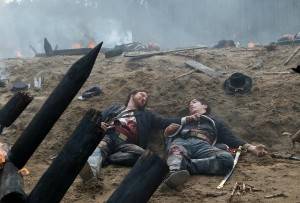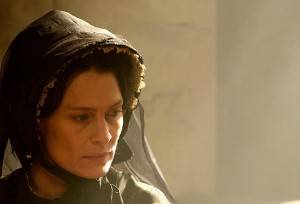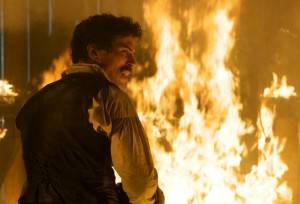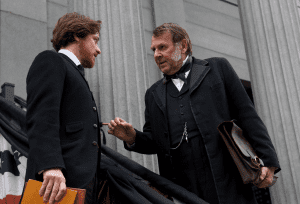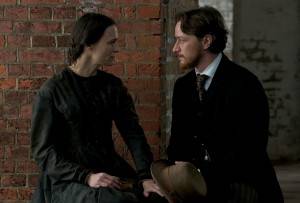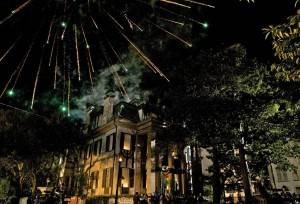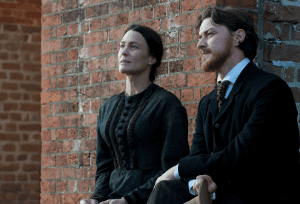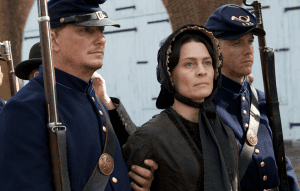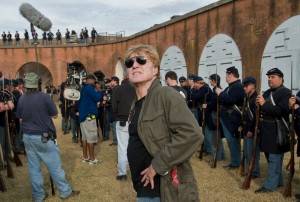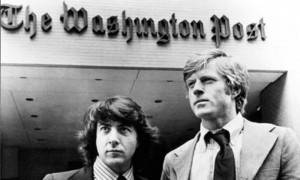The Conspirator
As soon as I heard that Robert Redford was directing a film about the assassination of Abraham Lincoln I wanted to see it, more so than the long awaited Steven Spielberg biopic which has been put back yet again; this time until after November 2012’s Presidential elections ostensibly to avoid it becoming “political fodder” but more likely to maximise its Oscar potential for 2013.
I recently became fascinated with the Lincoln assassination after listening to the original Off-Broadway cast recording of Stephen Sondheim’s Assassins, particularly The Ballad of Booth which explores the psyche of John Wilkes Booth (Victor Garber) and examines Abraham Lincoln’s legacy in light of the Abolition of Slavery and the American Civil War.
The Conspirator is the debut feature of the newly founded American Film Company which has taken up the remit to produce historically accurate, entertaining movies based on great stories from the USA’s collective past; in this case the account of Mary Surratt the owner of the boarding house where Booth regularly met with his fellow conspirators one of which was Mary’s own son, John.
In its opening scene The Conspirator quickly establishes the character of Frederick Aiken (James McAvoy) a decorated hero of the Union Army who now works as a trial lawyer in immediate post-war Washington. It also succinctly depicts the scope of the assassination plot which targeted not only the President but Vice President, Andrew Johnson and the Secretary of State, William Seward; with the intent of rallying the diehard Confederate troops who had not surrendered into a revived attack.
Whilst John Wilkes Booth was killed resisting capture the rest of the conspirators were arrested and charged with treason, among them Mary Surratt whose son, John remained on the run. The War Secretary Edwin Stanton (Kevin Kline) determined that a military tribunal should swiftly convict the conspirators despite controversial elder statesmen Reverdy Johnson’s (Tom Wilkinson) view that the constitutional principles of the Founding Fathers were under threat if civilians are not given a fair trial by jury.
Convinced that she was merely being used as a pawn to coax her son out from hiding Johnson approaches Aiken asking him to defend Mary Surratt (Robin Wright) as he feared his own reputation since advocating on behalf of southern slave-owners in the infamous Dred Scott lawsuit would only serve to further prejudice the case against her. As a staunch Yankee Aiken is reluctant to come to Surratt’s aid but agrees to meet with her although after a series of prison interviews he remains unconvinced of her innocence.
Aiken faces a lot of hostility and comes under increasing pressure from Union friends and colleagues to resign as Surratt’s council. In the face of such adversity he digs deeper into the evidence and it becomes apparent that key witnesses are being paid for favourable testimonies. In addition the accused is not permitted to testify on her behalf and almost all of Aiken’s objections are summarily dismissed by the tribunal made up entirely of Union Generals all who served as pallbearers at Lincoln’s funeral.
Inevitably Mary Surratt is found guilty by the court but they deliberate over sentencing her to death as she is a woman. However, in order not to appear weak for fear of encouraging intransigence in the remaining Confederate troops, Edwin Stanton overturns the decision and Mary is hanged despite an 11th hour writ of habeas corpus drafted by Aiken and indorsed by Supreme Court Judge, Andrew Wylie.
The Conspirator is an engaging historical drama in the courtroom tradition, solidly acted by a flawless ensemble cast. James McAvoy gives a sincere performance and Robin Wright remains the epitome of stoicism throughout. There are some obvious parallels drawn to the present era, especially since the passing of the Patriot Act which allows for suspects to be detained without charge, but Redford admirably resists pat comparisons or overwrought sentimentality in presenting Surratt’s tragic case.
An ironic coda reveals that 18 months after Mary was sentenced to death, John Surratt was apprehended and tried by a jury of his peers only to be acquitted on the grounds of insufficient evidence for his part in the conspiracy; an irrefutable case against capital punishment extremely timely in the light of the recent Georgia State execution of Troy Davis for the murder of a police officer despite inconclusive ballistic evidence.
Finally I was surprised to read that Frederick Aiken went on to edit the Washington Post the newspaper synonymous with Robert Redford since his landmark performance as celebrated reporter Bob Woodward in Alan J. Pakula’s iconic film version of Woodward and Bernstein’s Watergate exposé All The President’s Men.


